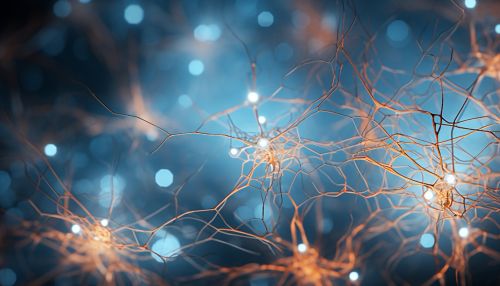Structural Plasticity
Introduction
Structural plasticity is the ability of the brain's neurons to change in form and function in response to variations in the environment, learning, and experience. This process is a fundamental mechanism of neural development and neuroplasticity, and it is crucial for the brain's capacity to adapt to new situations, learn new skills, and recover from brain injury.
Mechanisms of Structural Plasticity
Structural plasticity encompasses several different mechanisms, including synaptic plasticity, dendritic spine plasticity, and axonal sprouting.
Synaptic Plasticity
Synaptic plasticity is the ability of synapses to strengthen or weaken over time, in response to increases or decreases in their activity. This process is thought to be the cellular basis for learning and memory. There are two primary types of synaptic plasticity: long-term potentiation (LTP) and long-term depression (LTD).
Long-Term Potentiation
Long-term potentiation (LTP) is a long-lasting increase in synaptic strength following high-frequency stimulation of a synapse. It is one of the major cellular mechanisms that underlies learning and memory. LTP occurs when two neurons are activated simultaneously, resulting in the strengthening of the synapse between them.
Long-Term Depression
Long-term depression (LTD) is a long-lasting decrease in synaptic strength following low-frequency stimulation of a synapse. LTD is not simply the reverse of LTP, but a distinct process with its own molecular mechanisms. It is also crucial for learning and memory, as it allows for the elimination of irrelevant information.
Dendritic Spine Plasticity
Dendritic spines are small protrusions that come off the dendritic shaft of a neuron. They receive most of the excitatory input in the brain. Changes in the shape, size, and number of dendritic spines are a major mechanism of structural plasticity.
Axonal Sprouting
Axonal sprouting, also known as collateral sprouting, is the growth of new axon branches from existing axons. This process is particularly important in the brain's response to injury, as it allows for the reestablishment of synaptic connections that can compensate for lost function.


Factors Influencing Structural Plasticity
Several factors can influence the degree and direction of structural plasticity, including age, stress, hormones, environmental enrichment, and injury.
Age
Age is a significant factor in structural plasticity. During development, the brain exhibits a high degree of plasticity as it forms and refines synaptic connections. In adulthood, plasticity is reduced but still present, allowing for learning and memory formation. In old age, structural plasticity may decline, which can contribute to cognitive decline.
Stress
Stress can significantly impact structural plasticity. Chronic stress has been shown to reduce dendritic spine density and synaptic plasticity, potentially contributing to mood disorders and cognitive impairment.
Hormones
Hormones also play a crucial role in structural plasticity. For example, sex hormones such as estrogen and testosterone can influence synaptic plasticity and dendritic spine density.
Environmental Enrichment
Environmental enrichment – exposure to a stimulating, complex environment – can enhance structural plasticity, increasing dendritic spine density and synaptic plasticity. This effect is thought to underlie the cognitive benefits of education, physical exercise, and an active social life.
Injury
Following brain injury, structural plasticity can aid in recovery by reestablishing lost synaptic connections through axonal sprouting and synaptic plasticity.
Clinical Implications
Understanding and harnessing structural plasticity has significant clinical implications. It could potentially be used to treat a variety of neurological disorders, improve recovery from brain injury, and slow the cognitive decline associated with aging.
